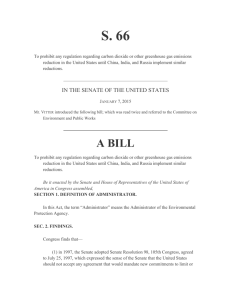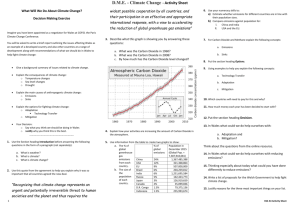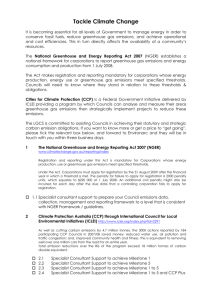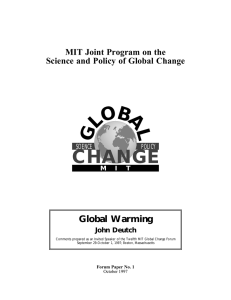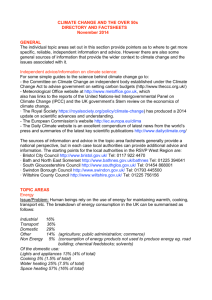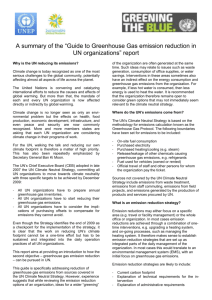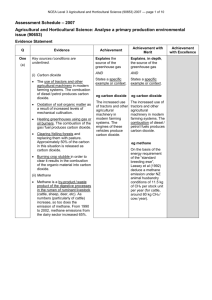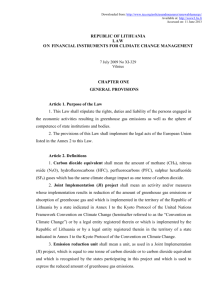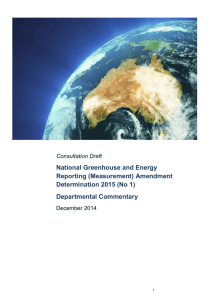doc
advertisement
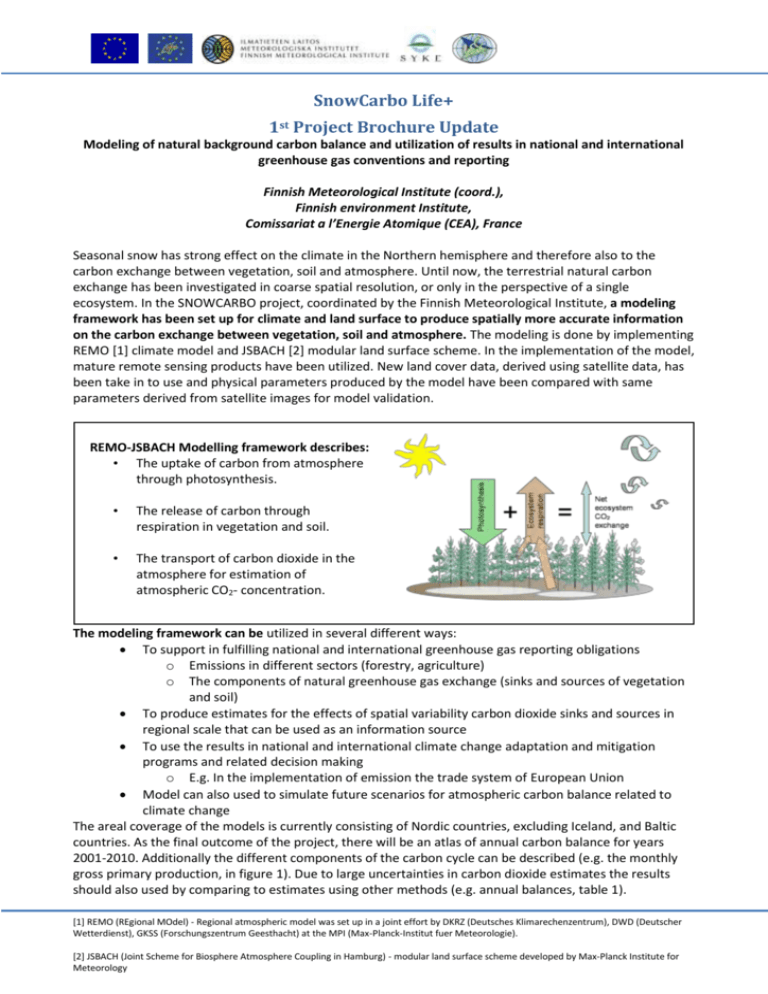
SnowCarbo Life+ 1st Project Brochure Update Modeling of natural background carbon balance and utilization of results in national and international greenhouse gas conventions and reporting Finnish Meteorological Institute (coord.), Finnish environment Institute, Comissariat a l’Energie Atomique (CEA), France Seasonal snow has strong effect on the climate in the Northern hemisphere and therefore also to the carbon exchange between vegetation, soil and atmosphere. Until now, the terrestrial natural carbon exchange has been investigated in coarse spatial resolution, or only in the perspective of a single ecosystem. In the SNOWCARBO project, coordinated by the Finnish Meteorological Institute, a modeling framework has been set up for climate and land surface to produce spatially more accurate information on the carbon exchange between vegetation, soil and atmosphere. The modeling is done by implementing REMO [1] climate model and JSBACH [2] modular land surface scheme. In the implementation of the model, mature remote sensing products have been utilized. New land cover data, derived using satellite data, has been take in to use and physical parameters produced by the model have been compared with same parameters derived from satellite images for model validation. REMO-JSBACH Modelling framework describes: • The uptake of carbon from atmosphere through photosynthesis. • The release of carbon through respiration in vegetation and soil. • The transport of carbon dioxide in the atmosphere for estimation of atmospheric CO2- concentration. The modeling framework can be utilized in several different ways: To support in fulfilling national and international greenhouse gas reporting obligations o Emissions in different sectors (forestry, agriculture) o The components of natural greenhouse gas exchange (sinks and sources of vegetation and soil) To produce estimates for the effects of spatial variability carbon dioxide sinks and sources in regional scale that can be used as an information source To use the results in national and international climate change adaptation and mitigation programs and related decision making o E.g. In the implementation of emission the trade system of European Union Model can also used to simulate future scenarios for atmospheric carbon balance related to climate change The areal coverage of the models is currently consisting of Nordic countries, excluding Iceland, and Baltic countries. As the final outcome of the project, there will be an atlas of annual carbon balance for years 2001-2010. Additionally the different components of the carbon cycle can be described (e.g. the monthly gross primary production, in figure 1). Due to large uncertainties in carbon dioxide estimates the results should also used by comparing to estimates using other methods (e.g. annual balances, table 1). [1] REMO (REgional MOdel) - Regional atmospheric model was set up in a joint effort by DKRZ (Deutsches Klimarechenzentrum), DWD (Deutscher Wetterdienst), GKSS (Forschungszentrum Geesthacht) at the MPI (Max-Planck-Institut fuer Meteorologie). [2] JSBACH (Joint Scheme for Biosphere Atmosphere Coupling in Hamburg) - modular land surface scheme developed by Max-Planck Institute for Meteorology Table 1. Sample from the Finnish national greenhouse gas inventory, reported for UNFCCC (United Nations convention on climate Change). Figure 1. Example of estimates produced by the model. In the above figure the gross primary production (GPP). Here the figure presents a monthly mean for July 2002 in [mol/m2/s], which is broadly speaking the carbon sequestered by vegetation. Similar maps can be produced for annual carbon balance. The modeling framework, implemented in SnowCarbo- project, can be used to produce information to support national and international climate policy making and monitoring. The central international conventions and programs in European level, which can utilize the results, are: Decision 280/2004/EC of the European Parliament and of the Council of 11 February 2004 concerning a mechanism for monitoring Community greenhouse gas emissions and for implementing the Kyoto Protocol. ► UNFCCC (United Nations Framework Convention on Climate Change) obligates the members of the convention to compile, update and publish their national greenhouse gas inventories (including carbon dioxide) on regular bases. DG CLIMA - European Climate Change Program (ECCP) – Climate change program of the European Union, concerning all actors in the European Union (public sector, private sector and non governmental organizations) ► The accounting of greenhouse gas emissions in all sectors of society (e.g. forestry and agriculture) and building mechanisms for restricting emissions. DG ENV – (ECCP) Action on Climate Change Post 2012 (Before the establishment of DG CLIMA in 2010) aims at preventing severe effects of climate change by limiting the global warming associated with human activity to under 2°C, when compared to the mean temperature of the pre-industrial era (1850-1899 ). ► Imposing emission limits, regulation of emission trade and monitoring of emissions need comprehensive emission accounting and reporting Other central programs of the European Commission: o DG ENER – Emission trade related to energy production; Research and development aiming at reduction of carbon dioxide emissions o DG MOVE – Program for reduction of emissions from land and sea traffic More information: Ali Nadir Arslan, Project Manager, Finnish Meteorological Institute Ali.nadir.arslan@fmi.fi, +358-50-320 3386









